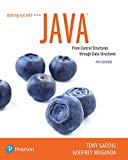
Concept explainers
Explanation of Solution
Complexity of an
The complexity of an algorithm solves a computations problem by finding the number of basic steps required for an input.
Proof:
Statement:
Explanation:
Consider the two algorithms “F” and “G” can be compared for solving a problem which can be done by comparing their complexity functions
The complexity functions can be compared if there exists a positive constant “K” such that,
The algorithm “F” is not worse than “K” times “G” for large problems. For this case, it can be given as
Want to see the full answer?
Check out a sample textbook solution
Chapter 16 Solutions
Starting Out with Java: From Control Structures through Data Structures (4th Edition) (What's New in Computer Science)
- Solve following recurrence with iterative substitution: T(n)= 2T(n/2)+c *O(1)arrow_forwardis this functions from R to R is a bijection or not f(x)=(x2+2)/(x2+3)arrow_forwardSolve the following recurrences using iteration methods and Master's Theorem (if possible) a. T(n) = 2T (n/3) +3 b. T(n) = 3T (n/6) + narrow_forward
 Database System ConceptsComputer ScienceISBN:9780078022159Author:Abraham Silberschatz Professor, Henry F. Korth, S. SudarshanPublisher:McGraw-Hill Education
Database System ConceptsComputer ScienceISBN:9780078022159Author:Abraham Silberschatz Professor, Henry F. Korth, S. SudarshanPublisher:McGraw-Hill Education Starting Out with Python (4th Edition)Computer ScienceISBN:9780134444321Author:Tony GaddisPublisher:PEARSON
Starting Out with Python (4th Edition)Computer ScienceISBN:9780134444321Author:Tony GaddisPublisher:PEARSON Digital Fundamentals (11th Edition)Computer ScienceISBN:9780132737968Author:Thomas L. FloydPublisher:PEARSON
Digital Fundamentals (11th Edition)Computer ScienceISBN:9780132737968Author:Thomas L. FloydPublisher:PEARSON C How to Program (8th Edition)Computer ScienceISBN:9780133976892Author:Paul J. Deitel, Harvey DeitelPublisher:PEARSON
C How to Program (8th Edition)Computer ScienceISBN:9780133976892Author:Paul J. Deitel, Harvey DeitelPublisher:PEARSON Database Systems: Design, Implementation, & Manag...Computer ScienceISBN:9781337627900Author:Carlos Coronel, Steven MorrisPublisher:Cengage Learning
Database Systems: Design, Implementation, & Manag...Computer ScienceISBN:9781337627900Author:Carlos Coronel, Steven MorrisPublisher:Cengage Learning Programmable Logic ControllersComputer ScienceISBN:9780073373843Author:Frank D. PetruzellaPublisher:McGraw-Hill Education
Programmable Logic ControllersComputer ScienceISBN:9780073373843Author:Frank D. PetruzellaPublisher:McGraw-Hill Education





